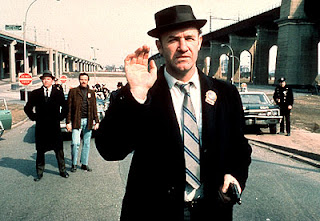They
drew up outside the house later that evening. The wind had got up and
was stirring the plane trees and the ragged fescues growing between
the stones. As they stepped out of the car, a squall hit them,
spattering the night with leaves and rain and odd speckled shadows
thrown by the electric lights like some ancient painting done in a
time when there had been no buildings between them and the river.
Away in another county, the horses stirred in their dark stabling and
nickered and rubbed their flanks against the estacada.
PK
opened the front door. The light from the hallway broke over them,
revealing Mrs K standing some way behind, elegant, her large dark
serious eyes taking them in. They had lit the heating for their
guests, but the house was still cool and PK wore a charcoal colored
jersey and shook hands with CJ and formally kissed Mrs J and Mrs K
kissed them both and said that they were to admire the new floor
which had been laid in the kitchen and the eating area. They solemnly
looked at it and envied its smooth conformities, unlike the sad ruins
which they had left behind in their own place.
That's
a hell of a floor, said CJ.
Aint
it though.
Must
of cost a couple weeks' wages.
PK
said nothing and they sat down to eat. The food was delicious,
delicate cheese-flavored hojaldres followed by a stew of wine and
beef and a lemon cream served in small white pots, one for each
guest, and the utensils were new and hard to master, and after some
time they spoke of the game known as fútbol and the women spoke of
other, graver, matters and then they spoke of the wine which PK had
brought out and placed upon the table like a monstrance, that they
should see it in its particularity and uniqueness.
Must
of cost a couple weeks' wages too.
You
got me.
What's
its name?
Chateau
Tour du Haut Moulin 2005.
Where'd
you get it at?
Some
place.
Aint
my usual.
You
better believe that. You want some more?
I'm
full as a tick.
Of
the wine.
I
believe I do.
You're
gettin it down.
I'm
next the heater. I'm dry.
It
was a dark and withholding wine whose secrets did not make themselves
clear at first but only later told of the earth in which the grapes
once grew and the strange sense of a faded tapestry such as
travellers might find in an abandoned homestead on the mesa. It left
a black residue on the sides of their glasses.
Could
plant a whole stand of cottonwoods in there. You got any more?
I'll
see.
PK
got up from the table and was gone some time and when he returned he
held in his hand another bottle which he said was Taste the
Difference and was not the same kind of wine. It had no cork, only a
metal cap to plug the contents. He unscrewed the cap with a snapping
noise before pouring the drink into their glasses.
Take
a fresh glass, you dont want that shit in there.
CJ
made a face as he tasted the new wine and looked for somewhere to
spit it out but there was nowhere, only the smooth dark floor divided
into even squares with thin cream lines between the squares and
although they had said these squares could not be stained by wine or
blood, still he felt uneasy at the thought of spitting the red wine
out and made himself drink it down. He turned to PK.
That's
somethin.
I
wont dispute it.
PK
held the bottle towards the light and looked at it and held his head
at an angle and shook it as if the bottle had told him a lie of some
kind.
You
think this is okay?
I
dont know.
Maybe
it wants some time.
How
much time we got?
I
dont know.
By
now they had eaten the last of the meal and they brought out coffee
and spoke of the great sorrowfulness of the world. Outside the storm
had abated and a thin clear moon could be seen among the shifting
banks of cloud while the rainwater shivered in pools and the people
of the town began to make their way home in the darkness. The women
stopped talking and looked at the men.
Do
you believe in fate, said Mrs J.
No
mam.
Neither
do I. That is why we must leave.
The
complexities of that remark stayed with PK and CJ a long time, long
after they had parted in that same hallway and CJ and Mrs J had said
their thanks and remarked a last time on the beauty of the floor.
Then they headed south towards the river which lay like a rope
uncoiled and passing between the lives of those who had grown up
beside it.
CMcJ




